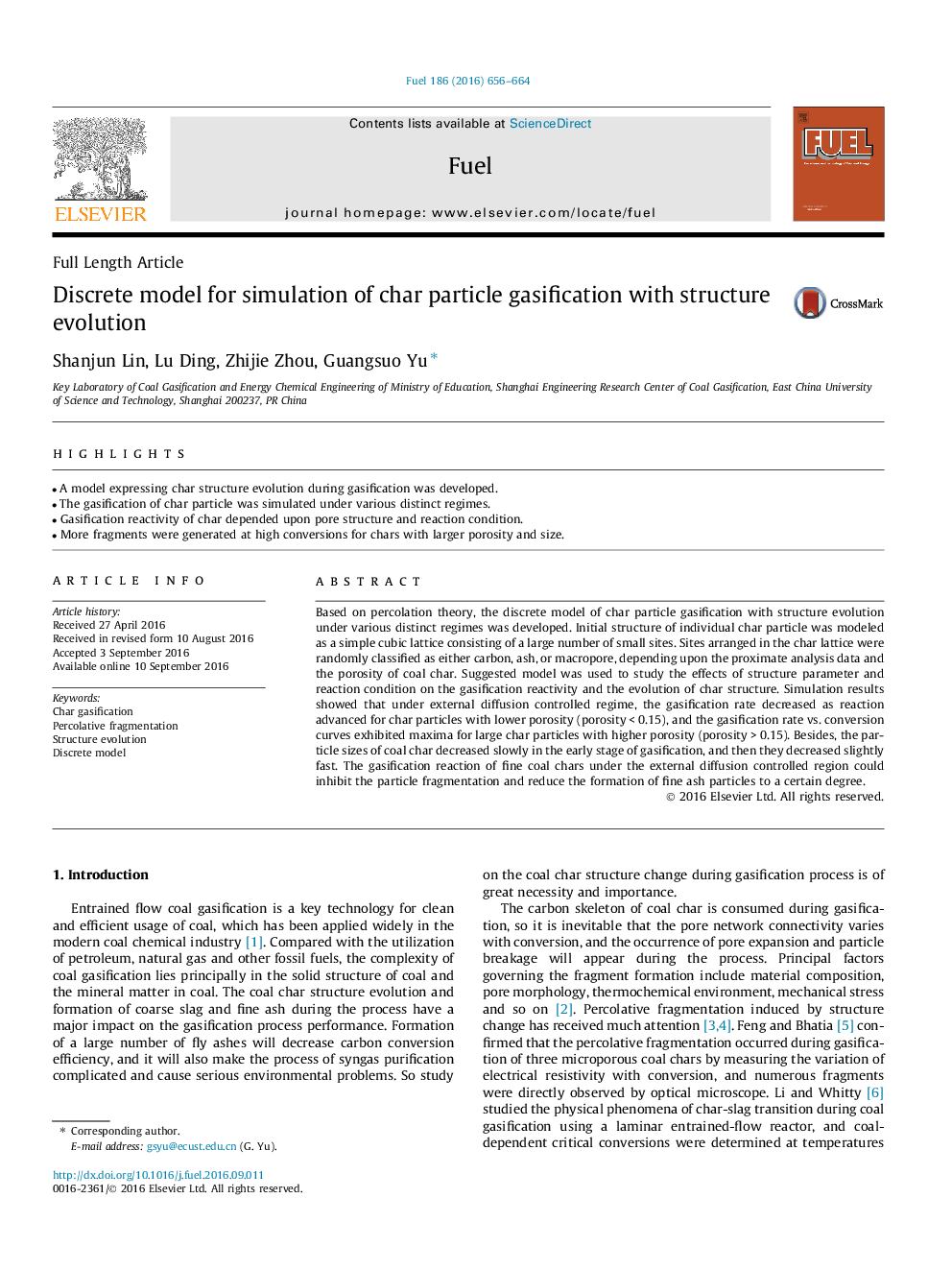| Article ID | Journal | Published Year | Pages | File Type |
|---|---|---|---|---|
| 6476166 | Fuel | 2016 | 9 Pages |
â¢A model expressing char structure evolution during gasification was developed.â¢The gasification of char particle was simulated under various distinct regimes.â¢Gasification reactivity of char depended upon pore structure and reaction condition.â¢More fragments were generated at high conversions for chars with larger porosity and size.
Based on percolation theory, the discrete model of char particle gasification with structure evolution under various distinct regimes was developed. Initial structure of individual char particle was modeled as a simple cubic lattice consisting of a large number of small sites. Sites arranged in the char lattice were randomly classified as either carbon, ash, or macropore, depending upon the proximate analysis data and the porosity of coal char. Suggested model was used to study the effects of structure parameter and reaction condition on the gasification reactivity and the evolution of char structure. Simulation results showed that under external diffusion controlled regime, the gasification rate decreased as reaction advanced for char particles with lower porosity (porosity < 0.15), and the gasification rate vs. conversion curves exhibited maxima for large char particles with higher porosity (porosity > 0.15). Besides, the particle sizes of coal char decreased slowly in the early stage of gasification, and then they decreased slightly fast. The gasification reaction of fine coal chars under the external diffusion controlled region could inhibit the particle fragmentation and reduce the formation of fine ash particles to a certain degree.
